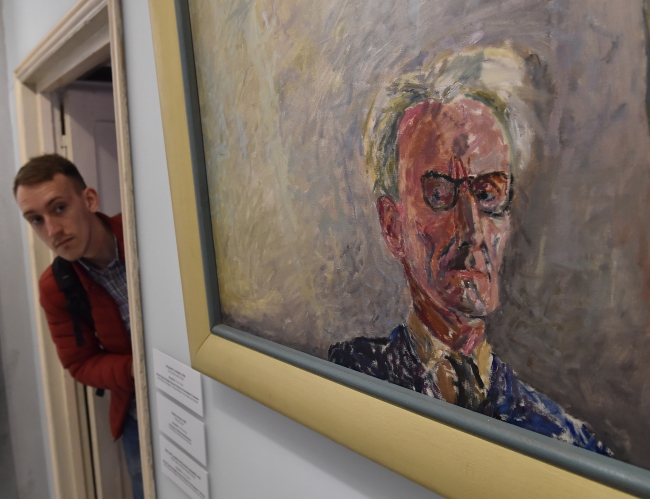During the 1930s, Czapski had been a member of the so-called Kapists, who sought liberation from the constraints of historical traditions in art.
With the outbreak of World War II, he was drafted as a reserve officer, although by then he had not seen active service for almost twenty years.
His internment by the Soviets – who had divided up Poland with Nazi Germany – set him on a course that would see him emerge as one of the key figures in the battle to expose the truth about the Katyn Crime, in which over 20,000 Polish POWs were executed by the Soviet secret police in April 1940.
Czapski had initially been imprisoned with those who would ultimately be shot, but he was transferred to another camp with close to 400 other POWs, the so-called 'Katyn Survivors.'
When Nazi Germany invaded the Soviet Union in 1941, Stalin was pressured by the UK and the Polish government-in-exile based there into releasing thousands of other Polish internees on Soviet soil, and Czapski was freed.
He became an official envoy of the Polish government-in-exile, searching for the missing Polish officers in the Soviet Union.
His classic memoir 'The Inhuman Land', published in 1949 when he was living as an exile in Paris, recounts his wartime oddysey.

A self-portrait by Józef Czapski inside the new pavilion. Photo: PAP/Jacek Bednarczyk
The new Jozéf Czapski Pavilion, designed by architect Danuta Fredowicz, draws together paintings, journals, archival film footage and a reconstruction of the artist's modest studio.
It is set in the garden of Kraków's Hutten-Czapski Palace, which once belonged to Józef Czapski's grandfather, and is currently a part of the National Museum.
The layout of the exhibition was created by the late artist's friend Professor Krystyna Zachwatowicz-Wajda, the noted scenographer and wife of film director Andrzej Wajda.
“This new building you can truly describe with the English word masterpiece,” enthused director of the National Museum in Kraków Andrzej Betlej, in an interview with Radio Poland.
“It's something small and really wonderful.
“I don't mean only the architecture but also the contents: wonderful pictures, wonderful artworks, very interesting journals – I think everything combines in this building.” (nh/pk)